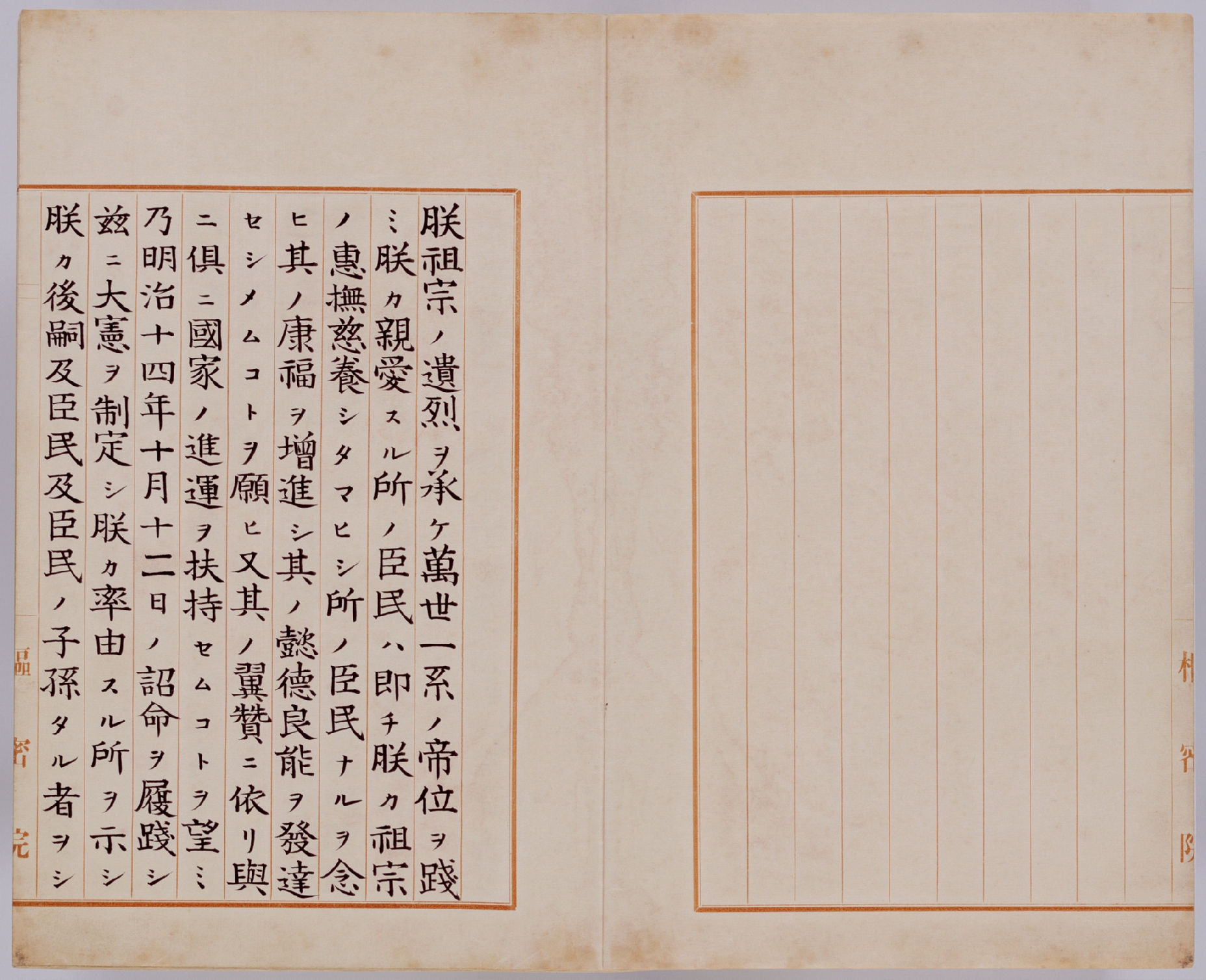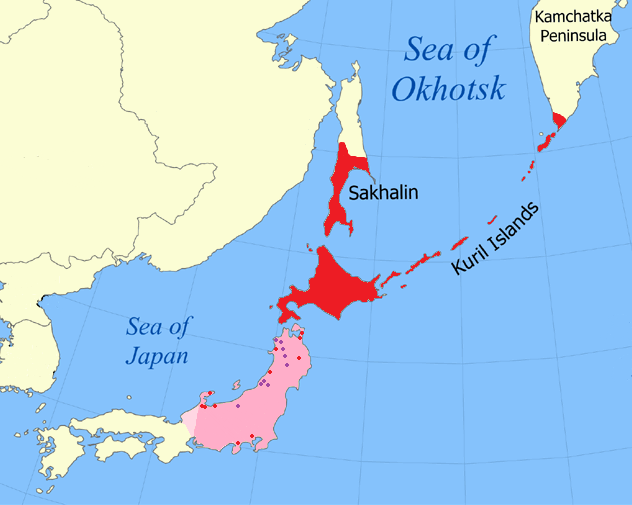|
Katakana Phonetic Extensions
Katakana Phonetic Extensions is a Unicode block containing additional small katakana characters for writing the Ainu language, in addition to characters in the Katakana is a Japanese syllabary, one component of the Japanese writing system along with hiragana, kanji and in some cases the Latin script (known as rōmaji). The word ''katakana'' means "fragmentary kana", as the katakana characters are derived fr ... block. Further small katakana are present in the Small Kana Extension block. History The following Unicode-related documents record the purpose and process of defining specific characters in the Katakana Phonetic Extensions block: References {{Japanese language Unicode blocks Ainu languages Kana ... [...More Info...] [...Related Items...] OR: [Wikipedia] [Google] [Baidu] |
Katakana
is a Japanese syllabary, one component of the Japanese writing system along with hiragana, kanji and in some cases the Latin script (known as rōmaji). The word ''katakana'' means "fragmentary kana", as the katakana characters are derived from components or fragments of more complex kanji. Katakana and hiragana are both kana systems. With one or two minor exceptions, each syllable (strictly mora (linguistics), mora) in the Japanese language is represented by one character or ''kana'' in each system. Each kana represents either a vowel such as "''a''" (katakana wikt:ア, ア); a consonant followed by a vowel such as "''ka''" (katakana wikt:カ, カ); or "''n''" (katakana wikt:ン, ン), a nasal stop, nasal sonorant which, depending on the context, sounds like English ''m'', ''n'' or ''ng'' () or like the nasal vowels of Portuguese language, Portuguese or Galician language, Galician. In contrast to the hiragana syllabary, which is used for Japanese words not covered by kanji an ... [...More Info...] [...Related Items...] OR: [Wikipedia] [Google] [Baidu] |
Unicode Block
A Unicode block is one of several contiguous ranges of numeric character codes (code points) of the Unicode character set that are defined by the Unicode Consortium for administrative and documentation purposes. Typically, proposals such as the addition of new glyphs are discussed and evaluated by considering the relevant block or blocks as a whole. Each block is generally, but not always, meant to supply glyphs used by one or more specific languages, or in some general application area such as mathematics, surveying, decorative typesetting, social forums, etc. Design and implementation Unicode blocks are identified by unique names, which use only ASCII characters and are usually descriptive of the nature of the symbols, in English; such as "Tibetan" or "Supplemental Arrows-A". (When comparing block names, one is supposed to equate uppercase with lowercase letters, and ignore any whitespace, hyphens, and underbars; so the last name is equivalent to "supplemental_arrows_a", ... [...More Info...] [...Related Items...] OR: [Wikipedia] [Google] [Baidu] |
Katakana
is a Japanese syllabary, one component of the Japanese writing system along with hiragana, kanji and in some cases the Latin script (known as rōmaji). The word ''katakana'' means "fragmentary kana", as the katakana characters are derived from components or fragments of more complex kanji. Katakana and hiragana are both kana systems. With one or two minor exceptions, each syllable (strictly mora (linguistics), mora) in the Japanese language is represented by one character or ''kana'' in each system. Each kana represents either a vowel such as "''a''" (katakana wikt:ア, ア); a consonant followed by a vowel such as "''ka''" (katakana wikt:カ, カ); or "''n''" (katakana wikt:ン, ン), a nasal stop, nasal sonorant which, depending on the context, sounds like English ''m'', ''n'' or ''ng'' () or like the nasal vowels of Portuguese language, Portuguese or Galician language, Galician. In contrast to the hiragana syllabary, which is used for Japanese words not covered by kanji an ... [...More Info...] [...Related Items...] OR: [Wikipedia] [Google] [Baidu] |
Ainu Language
Ainu (, ), or more precisely Hokkaido Ainu (), is a language spoken by a few elderly members of the Ainu people on the northern Japanese island of Hokkaido. It is a member of the Ainu language family, itself considered a language family isolate with no academic consensus of origin. It is classified as Critically Endangered by the UNESCO ''Atlas of the World's Languages in Danger''. Until the 20th century, the Ainu languages – Hokkaido Ainu and the now-extinct Kuril Ainu and Sakhalin Ainu – were spoken throughout Hokkaido, the southern half of the island of Sakhalin and by small numbers of people in the Kuril Islands. Due to the colonization policy employed by the Japanese government, the number of Hokkaido Ainu speakers decreased through the 20th century, and it is now moribund. A very low number of elderly people still speak the language fluently, though attempts are being made to revive it. Speakers The term "Ainu" comes from the endonym of the Ainu people, ' (), ... [...More Info...] [...Related Items...] OR: [Wikipedia] [Google] [Baidu] |
Katakana (Unicode Block)
Katakana is a Unicode block containing katakana characters for the Japanese and Ainu languages. Block History The following Unicode-related documents record the purpose and process of defining specific characters in the Katakana block: See also * Katakana Phonetic Extensions (Unicode block) * Kana Extended-A (Unicode block) * Kana Extended-B (Unicode block) * Kana Supplement (Unicode block) * Small Kana Extension (Unicode block) * Hiragana (Unicode block) * CJK Compatibility (Unicode block) * Enclosed CJK Letters and Months (Unicode block) * Halfwidth and Fullwidth Forms (Unicode block) Halfwidth and Fullwidth Forms is a Unicode block U+FF00–FFEF, provided so that older encodings containing both halfwidth and fullwidth characters can have lossless translation to/from Unicode. It is the second-to-last block of the Basic Mul ... References {{Japanese language Unicode blocks Kana ... [...More Info...] [...Related Items...] OR: [Wikipedia] [Google] [Baidu] |
Small Kana Extension
Small Kana Extension is a Unicode block containing additional small variants for the Hiragana and Katakana syllabaries, in addition to those in the Hiragana, Katakana and Katakana Phonetic Extensions blocks. Block Unassigned code points in the U+1B130 to U+1B163 range were set aside for possible future small kana. History The following Unicode-related documents record the purpose and process of defining specific characters in the Small Kana Extension block: Fonts As of 28 March 2024, 2 fonts are known to support the 15.0 Small Kana Extension range: *BabelStone Han. *Nishiki-teki. Other fonts *FRBTaiwaneseKana supports 𛅦 (U+1B166), but none of the other 8 characters. See also * Hiragana (Unicode block) * Katakana (Unicode block) * Kana Extended-A (Unicode block) * Kana Extended-B (Unicode block) * Kana Supplement (Unicode block) Kana Supplement is a Unicode block containing one archaic katakana character and 255 hentaigana (non-standard Hiragana) characters. Additi ... [...More Info...] [...Related Items...] OR: [Wikipedia] [Google] [Baidu] |
Unicode
Unicode or ''The Unicode Standard'' or TUS is a character encoding standard maintained by the Unicode Consortium designed to support the use of text in all of the world's writing systems that can be digitized. Version 16.0 defines 154,998 Character (computing), characters and 168 script (Unicode), scripts used in various ordinary, literary, academic, and technical contexts. Unicode has largely supplanted the previous environment of a myriad of incompatible character sets used within different locales and on different computer architectures. The entire repertoire of these sets, plus many additional characters, were merged into the single Unicode set. Unicode is used to encode the vast majority of text on the Internet, including most web pages, and relevant Unicode support has become a common consideration in contemporary software development. Unicode is ultimately capable of encoding more than 1.1 million characters. The Unicode character repertoire is synchronized with Univers ... [...More Info...] [...Related Items...] OR: [Wikipedia] [Google] [Baidu] |
International Committee For Information Technology Standards
The InterNational Committee for Information Technology Standards (INCITS), (pronounced "insights"), is an ANSI-accredited standards development organization composed of Information technology developers. It was formerly known as the X3 and NCITS. INCITS is the central U.S. forum dedicated to creating technology standards. INCITS is accredited by the American National Standards Institute (ANSI) and is affiliated with the Information Technology Industry Council, a global policy advocacy organization that represents U.S. and global innovation companies. INCITS coordinates technical standards activity between ANSI in the US and joint ISO The International Organization for Standardization (ISO ; ; ) is an independent, non-governmental, international standard development organization composed of representatives from the national standards organizations of member countries. Me .../ IEC committees worldwide. This provides a mechanism to create standards that will be implemen ... [...More Info...] [...Related Items...] OR: [Wikipedia] [Google] [Baidu] |
ISO/IEC JTC 1/SC 2
ISO/IEC JTC 1/SC 2 Coded character sets is a standardization subcommittee of the Joint Technical Committee ISO/IEC JTC 1 of the International Organization for Standardization (ISO) and the International Electrotechnical Commission (IEC), that develops and facilitates standards within the field of coded character sets. The international secretariat of ISO/IEC JTC 1/SC 2 is the Japanese Industrial Standards Committee (JISC), located in Japan. SC 2 is responsible for the development of the Universal Coded Character Set standard (ISO/IEC 10646), which is the international standard corresponding to the Unicode Standard. History The subcommittee was established in 1987 under ISO/TC 97 as ISO/TC 97/SC 2, originally with the title "Character Sets and Information Coding", with the area of work being, "the standardization of bit and byte coded representation of information for interchange including among others, sets of graphic characters, of control functions, of picture elements and audi ... [...More Info...] [...Related Items...] OR: [Wikipedia] [Google] [Baidu] |
Unicode Blocks
A Unicode block is one of several contiguous ranges of numeric character codes (code points) of the Unicode character set that are defined by the Unicode Consortium for administrative and documentation purposes. Typically, proposals such as the addition of new glyphs are discussed and evaluated by considering the relevant block or blocks as a whole. Each block is generally, but not always, meant to supply glyphs used by one or more specific languages, or in some general application area such as mathematics, surveying, decorative typesetting, social forums, etc. Design and implementation Unicode blocks are identified by unique names, which use only ASCII characters and are usually descriptive of the nature of the symbols, in English language, English; such as "Tibetan" or "Supplemental Arrows-A". (When comparing block names, one is supposed to equate uppercase with lowercase letters, and ignore any whitespace, hyphens, and underbars; so the last name is equivalent to "suppleme ... [...More Info...] [...Related Items...] OR: [Wikipedia] [Google] [Baidu] |
Ainu Languages
The Ainu languages ( ), sometimes known as Ainuic, are a small language family, often regarded as a language isolate, historically spoken by the Ainu people of northern Japan and neighboring islands, and formerly in parts of the Asian mainland, including the southern part of the Kamchatka Peninsula. The primary varieties of Ainu are alternately considered a group of closely related languages or divergent dialects of a single language isolate. The only surviving variety is Hokkaido Ainu, which UNESCO lists as critically endangered. Sakhalin Ainu and Kuril Ainu are now extinct. Toponymic evidence suggests Ainu was once spoken in northern Honshu and that much of the historically attested extent of the family was due to a relatively recent expansion northward. No genealogical relationship between Ainu and any other language family has been demonstrated, despite numerous attempts. Varieties Recognition of the different varieties of Ainu spoken throughout northern Japan and its s ... [...More Info...] [...Related Items...] OR: [Wikipedia] [Google] [Baidu] |




